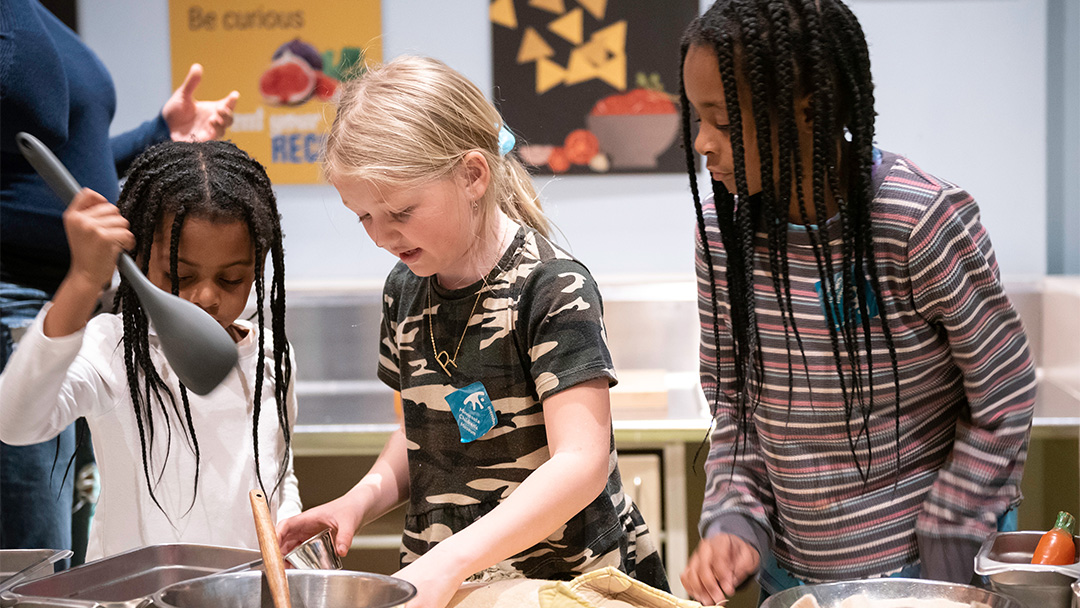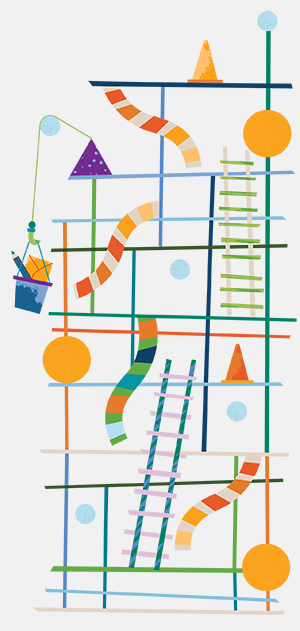
Tips for Supporting Social-Emotional Learning in Kids
Thankfully, kids are resilient and their brains are primed for growth. With some extra support, they’ll be okay. Here are some ideas to help kids build and practice their emotional know-how. Try these tips out when kids are feeling calm so they can use their skills when big feelings try to get the better of them.
Four Fun Ideas for Supporting Emotional Learning:
- Play a game of Feelings Charades. Write down 10 to 15 different feelings and emotions on small pieces of paper, fold them up and put them in a bowl. Take turns choosing one and then act the feeling out. What does the emotion look like on your face? How does it make your body move? If you need inspiration coming up with emotions, the Feelings Wheel is a great tool for this game (or any time someone needs help identifying what’s going on inside them).
- Try an online app that focuses on emotional intelligence. If you do some research, you can find a lot of good apps and online games designed to help kids understand and practice emotions and emotional regulation. Common Sense Media, a non-profit organization that reviews media and technology aimed at kids, has curated an extensive list of apps and games that support a child’s emotional learning.
- Create an emotions collage. Grab some old magazines or newspapers and have your child cut out photos that represent identifiable emotions like joy, anger, sadness, excitement, etc. Talk about each emotion and how it makes them feel before pasting pasting the photos onto corresponding sheets of paper. When feelings fly high, use the collages to help kids relate and reflect.
- Help kids reflect on their emotions… literally. Grab a small mirror or front-facing camera phone and brainstorm a list of emotions. Have your child act out each emotion and its expressions as they watch their face in the mirror or camera. Have fun with it and talk about how it feels to make the faces. Be sure to end on a positive note by finishing with a happy feeling.
Four Tactics for Teaching Kids to Manage Emotions:
- Practice deep breathing exercises for kids. Model the importance of controlled breathing when you’re nervous or upset, and work with your child to make it a part of their routine. If they love animals, have them breathe in like a bunny smelling a flower or a puppy sniffing a shoe–several short intakes of breath, then a long exhale. Or, have them pretend one hand is a flower and the other is a birthday cake: Inhale the smell of the flower and then blow out the candles on the birthday cake. The trick is to get kids comfortable controlling their breathing when it’s easy so that they can use it as a tool when they’re anxious or upset.
- H.A.L.T. This handy acronym stands for the four most common reasons for emotional distress: Hungry, Angry, Lonely and Tired. Some experts extend it to H.A.L.T.E.D. by adding Embarrassed and Disappointed as well. Use this acronym to help kids reflect on why emotions sometimes seem out of control. When kids can name their discomfort, they’re more likely to ease it before it spirals.
- Harness the power of exercise. Scientific studies hail the benefits of cardio exercise as a tool to not only improve physical health, but also mood and overall well-being. Encourage kids to move their bodies and get their hearts pumping every day–sprint around the park, go on a long family bike ride, dance to their favorite album. Whatever it is (the internet has no shortage of ideas), make it a part of the routine when kids need a reset.
- Make a coping kit with your child. Think of this as a collection of objects and tips tailored to your child that will help them cope during a tough time. Use any sort of box or reusable bag and pack it with things like a fidget toy, a stuffed animal to hug, a favorite book, paper and crayons, a special snack or anything else that would resonate with your child while they are experiencing a strong emotion. Make sure your child has input on what goes into the kit so that when they need it, it’s exactly what they need.
Building Social-Emotional Learning Through Play
As much as we wish we could gift our kids with all of the social and emotional skills they’ll need to thrive in the world, there’s no substitute for learning on their own. Thankfully, studies show that play is their best instructor.
- Play lets kids step into a world of their own creation, where they’re empowered to solve their problems together.
- Play creates space for kids to express themselves and experience a range of emotions.
- Play builds patience and resilience and sets kids up with the social-emotional mindsets they need to achieve their goals.

SUPPORTING A CHILD’S PLAY
Playful Mindset Turns Chore Time into Play TIme
There’s no way around it: There are always chores to do and errands to run.
Those responsibilities don’t have to be a drag on an otherwise lovely day. What if, instead, they became a way to engage with kids and have some playful time together?
Tips for Tackling the Boredom Blahs
Kids are hard-wired to play. But even for children, the free and imaginative play that research shows is best for their development doesn’t always come easily. Sometimes their energy levels are low, daily frustrations are too high or they just can’t seem to find the inspiration to create their own fun. That’s when the dreaded “I’m bored” comes out.
Three Tips to Get the Most Out of Screen Time for Kids
Study after study shows that engaging with technology alongside your child helps them get the most out of it.
Helping Kids Manage Stress
While we can’t keep kids from feeling stressed, we can play a crucial role in helping kids feel safe and secure during stressful times.